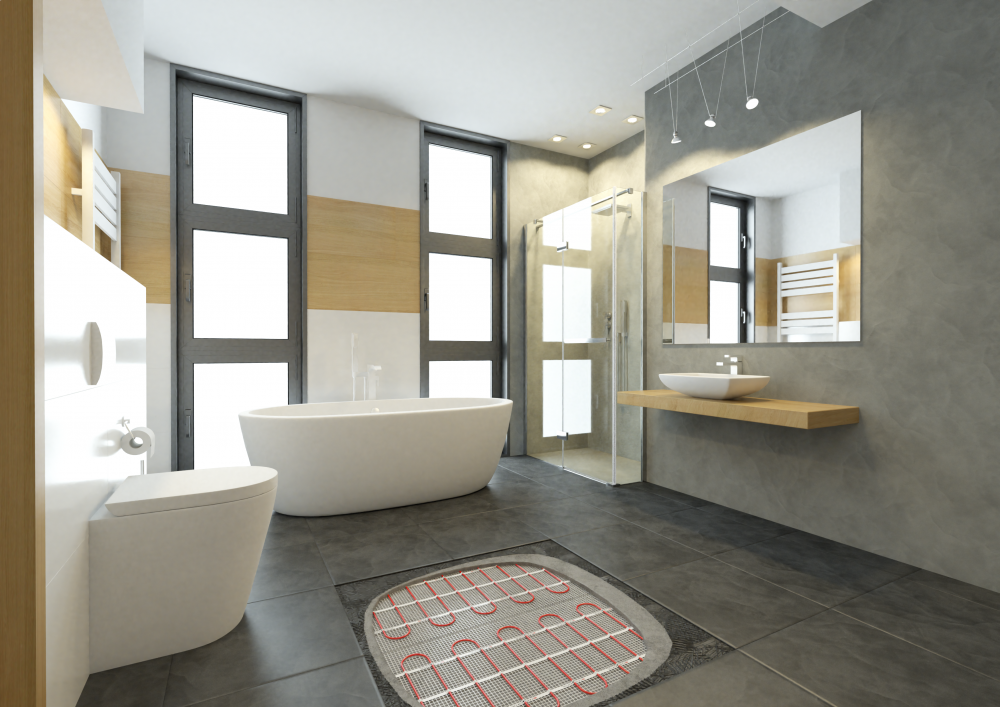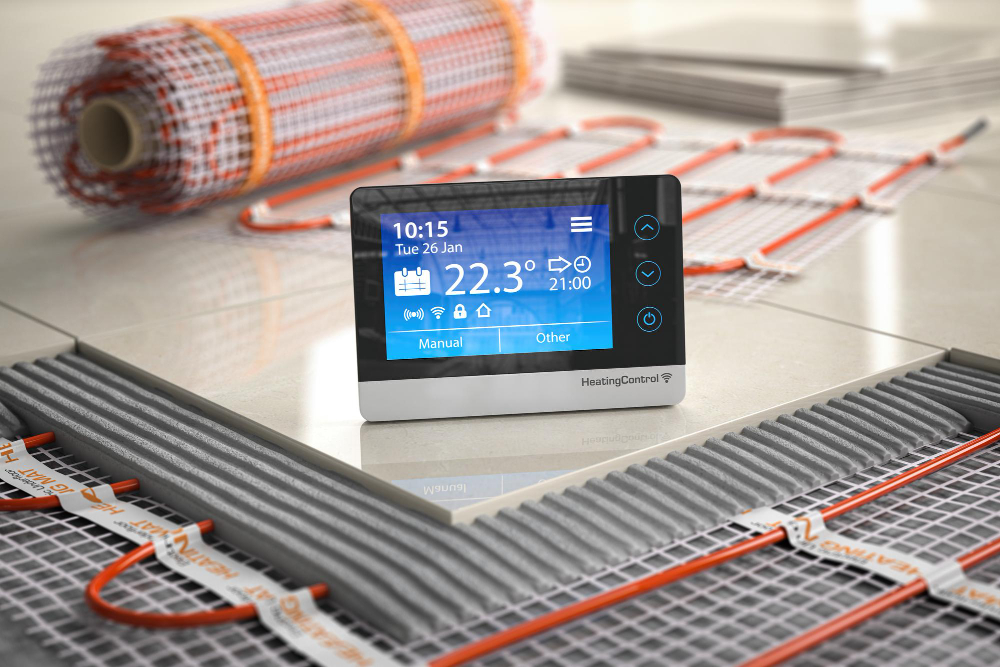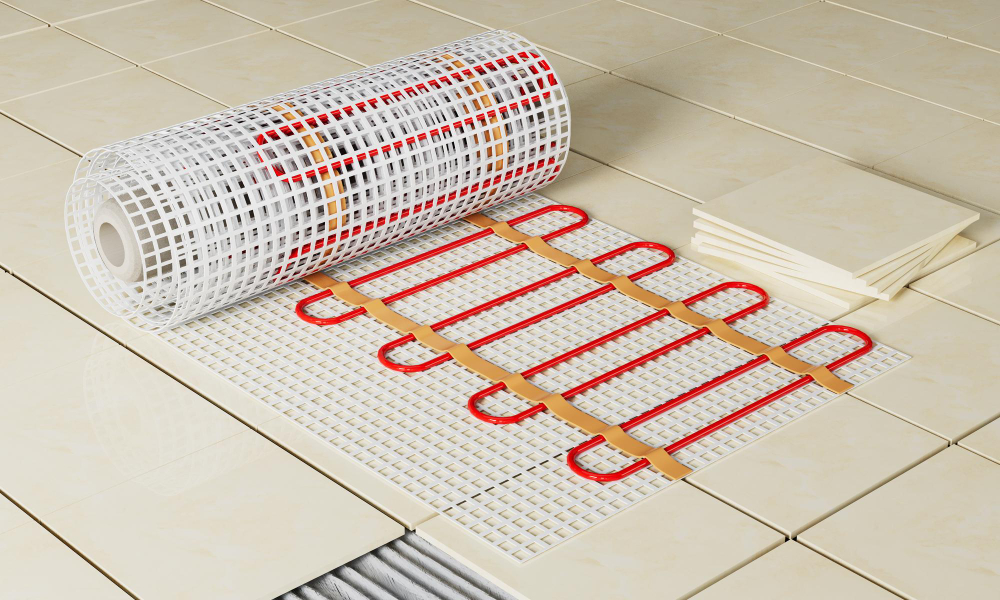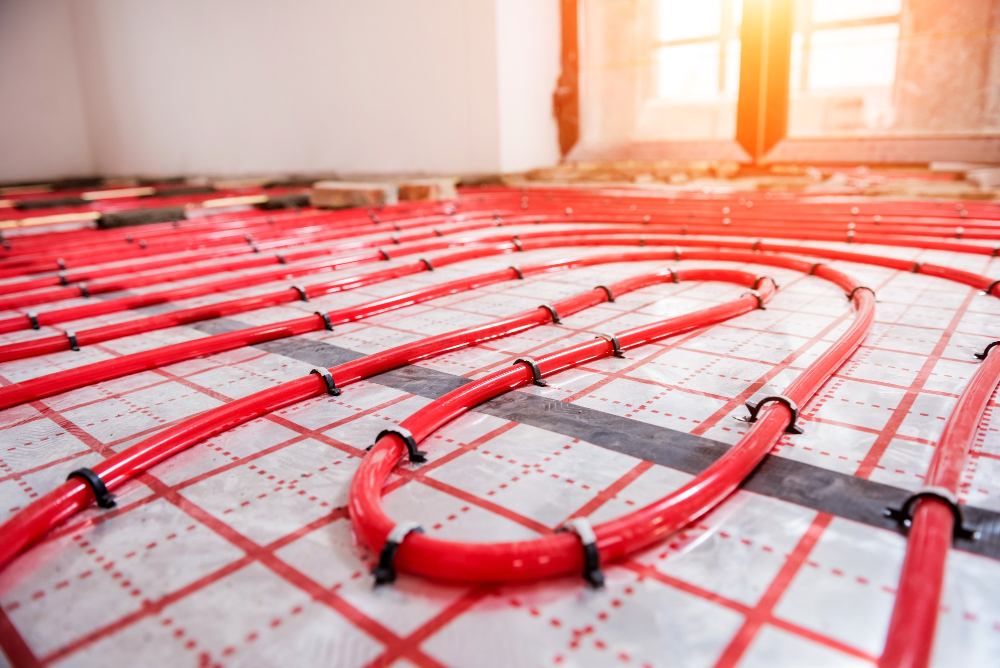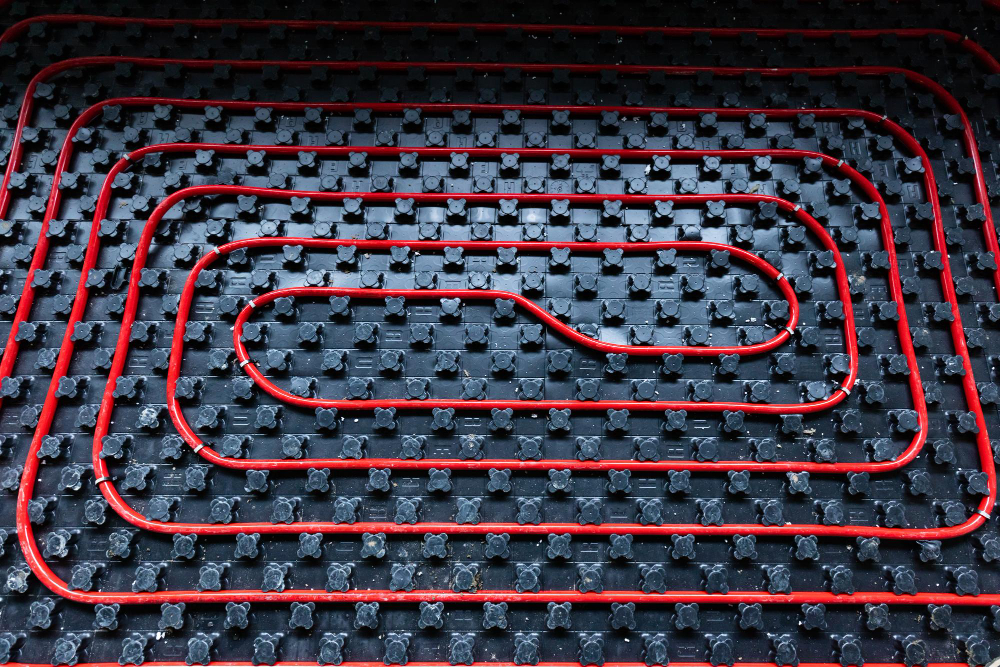Heating mats are devices used for heating surfaces with many applications – both domestic and commercial. They are made of a flexible material and contain heating elements that distribute heat evenly across the entire surface of the mat. One of the most popular applications of heating mats is their use as an underfloor heating system. These mats are installed under the floor surface, allowing for even heat transfer throughout the room.
Heating mats are valued for their energy efficiency, ease of installation, and eco-friendliness. They can be controlled with thermostats, allowing for precise temperature control and adjustment to one’s needs and preferences.
Heating Mats vs. Traditional Underfloor Heating
Heating mats and traditional underfloor heating systems differ in several key respects, although both aim to heat the floor surface, and consequently the entire room.
First and foremost, they differ in the type of construction and installation method. A heating mat is usually thin and has heating elements. The installation of heating mats is simpler and often chosen for renovation projects.
In the installation of traditional underfloor heating, pipes through which hot water flows are installed under the floor. The installation of this type of heating is more complicated, which is a better solution for new constructions or extensive renovations.
Unlike heating mats, traditional underfloor heating systems may take longer to heat up. Heating mats quickly respond to thermostat settings, allowing for very fast and efficient room heating.
Heating mats are ideal for smaller spaces or specific areas, such as bathrooms or dressing rooms. Standard underfloor heating is more suitable for larger spaces and entire buildings, providing comprehensive and even heating.
The price of both options is also significant. Heating mats are usually more expensive to purchase, but cheaper to install and operate. They can also be a great addition to hydronic heating.
The Ecological Revolution in Your Home
Heating mats, like other forms of underfloor heating, can be more energy-efficient than traditional heating systems, such as radiators. Since the heat is emitted directly from the floor, it heats the room evenly and efficiently, which can lead to reduced energy consumption. Additionally, they are often equipped with precise thermostats, allowing for more accurate temperature control in rooms. The ability to set and regulate the temperature for individual rooms means that energy is not wasted on heating unnecessary spaces.
Heating mat systems can be easily integrated with renewable energy sources, such as solar energy, which can further increase their eco-friendliness. Combined with green electrical energy, these systems can be completely neutral in terms of carbon dioxide emissions.
Moreover, underfloor heating in the form of mats minimizes heat loss, as the heat is generated directly where it is needed, and does not move through ventilation ducts or space under the ceiling, as in the case of traditional heating systems. Heating mats often operate at lower temperatures than traditional radiators, which is more energy-efficient while still providing sufficient heat to warm the room.
Heating mats are usually very durable and require minimal maintenance. The longevity of these systems means that they need to be replaced less frequently, which contributes to reducing waste and the need to use new resources.
However, it is worth noting that the eco-friendliness of any heating system depends on many factors, including how it is powered (e.g., renewable or traditional energy), building insulation, and individual user behaviors. To maximize environmental benefits, these aspects should also be considered.
Summary
Heating mats are becoming increasingly popular as an ecological and efficient solution in home heating. They represent an innovative alternative to traditional heating systems, emphasizing their numerous environmental and economic benefits.
The main advantage of heating mats is their energy efficiency. Thanks to direct surface heating, these mats evenly distribute heat, reducing energy losses and lowering operating costs. Precise temperature control with thermostats allows for reduced energy consumption, simultaneously limiting the emission of harmful substances.
Another important point is the compatibility of heating mats with renewable energy sources. The possibility of powering them using solar energy or other green sources makes them even more environmentally friendly. Additionally, their longevity and minimal need for maintenance contribute to sustainable resource use. They are an ideal solution for modern, well-insulated homes, providing efficiency and comfort without negatively impacting the environment. It also emphasizes that proper installation and use of heating mats are key to maximizing their ecological benefits.
In conclusion, heating mats are a future-oriented option for those seeking efficient and ecological home heating solutions.
